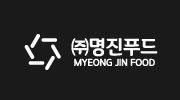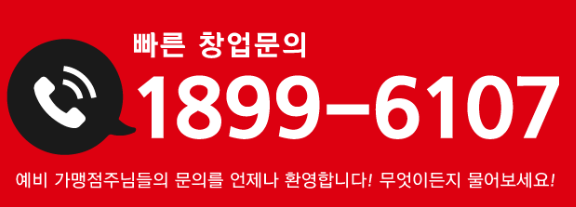Think You're Cut Out For Search Engine Optimization? Try This Quiz
페이지 정보

본문
 What is Search Engine Optimization?
What is Search Engine Optimization?Search engine optimization is the process of taking a piece content and optimizing it so that search engines like Google will display it in search results more prominently. SEO is comprised of several key components, including the building of links and page structure.
It also involves identifying what users are looking for, and then enhancing keywords based on user intent. It also is about conversion rate optimization (CRO).
Keywords
Keywords are a vital link between what users of search engines are looking for and websites that provide content that meets those requirements. They're a method of communicating to search engines the topics your content addresses and the degree to which it is able to satisfy the needs of the user. Keywords are focused on the user which is why it is essential to know the language spoken by your clients and what kind of content they seek. You can do this by conducting market research, interviewing customers and engaging with social media platforms.
Keywords were the primary method of communicating to search engines what a website was about prior to semantic search. The more frequently a keyword is used, the higher the site's ranking. However, this led to practices known as keyword stuffing, which lead to a decline in search engine credibility. Utilizing too many keywords can also lead to content being ranked as low-quality and spammy.
The most effective SEO keywords strike the ideal balance between volume, competition, and relevance. They should also be used in the right places to maximize their impact on your site's performance. Keywords are important because they help you attract the right audience to your business. They can boost traffic, which will result in more conversions and, ultimately, more ROI.
While high volume of searches are tempting but it is important to concentrate on quality traffic, not quantity. Keywords that don't relate to your business can result in visitors who leave your page quickly which can increase the bounce rate and lowering your ranking. Keywords should be included in the title tag Meta description URL internal links, file names for images and the body of your content.
While singular keywords may have a high search volume, they can have extremely challenging competition and are extremely difficult to rank for. For instance, "dog" is searched more than 1.2 million times a month, but it can be challenging to rank for that particular keyword. Long tail keywords are more specific and consequently easier to rank. These keywords are also cheaper and increase the visibility of your company.
Optimization of the web page
The term "on page optimization" refers to the procedure of optimizing a website page to rank higher in search results pages (SERPs). It includes modifications to content, HTML and other elements on a website. On-page SEO, unlike off-page optimization is focused on elements in your control.
On-page optimization starts by analysing the current ranking of a page and identifying its potential. This is done by the analysis of competitor data and the keywords utilized on rival websites. It also involves identifying any technical parameters that could be improved.
Once you have a list of potential issues, you can start to address them. Prioritize issues that could have a major impact on the position of your site and then begin working from there. This means you can be sure that your SEO efforts have a positive impact on your rankings.
Another crucial aspect of on-page optimization is internal linking. This means linking to pages on your site that are relevant to the page you are optimizing. This will enhance the user experience and aid search engines in understanding the importance of your website to a specific search.
Title tags are important for on-page SEO because they tell search engine what your website is about. Your title tag should include your keyword as well as other relevant words. Title tags are a good place to use LSI keyword, as they can boost your visibility in search results.
Meta description tags are a different on-page optimization element. They are tiny pieces of text that appear below the URL on a search engine results page. They can encourage users to click a link and also serve as an index of rank.
Page speed is among the most important aspects to on-page optimization. Google prefers faster pages, and this will help you get into their search index quicker. Image compression, JavaScript files and caching can help you achieve this. There are numerous other ways to optimize your website for page speed. These are only some of the options.
Off-page optimization
Finding your way onto search engine results pages (SERPs) requires both on-page and off-page optimization. On-page SEO entails the use of keywords, internal linking, and high-quality content. Off-page SEO is the process of implementing actions outside of a website that enhance rankings. These activities include link-building, social media engagement and public relations.
For the purposes of this article, we will concentrate on off-page SEO. In the past, off-page SEO been about the acquisition of links from other websites or blogs to the site. However, it now encompasses much more than just link-building. It also encompasses strategies that don't generate normal links, like content marketing and digital public relations.
Off-page SEO can be best understood by analyzing its impact on traffic. If someone mentions your company in a post on social media or blog, it can result in brand searches as well as hyperlinks. This type of off-page SEO is vital because it signals to Google that your site is well-known and the kind of site people expect to visit.
Other types of off-page SEO include local events online reviews, local seo optimisation events, and social media marketing. These activities can be especially useful for physical brands with brick-and-mortar locations. For example, a local sports team might hold a contest or event that generates interest in the brand, leading to reviews on the internet and social media posts. Even a simple thing like responding to negative or positive online reviews can contribute to off-page SEO because it indicates that you value your customers and are interested in hearing what they have to say.
A recent study has revealed that off-page SEO is now more important than ever before. It is responsible for 75% of a good digital strategy. Off-page SEO is a broad term that covers many different tactics however it is important to concentrate on the strategies that will assist you in reaching your goals. This will ensure that your efforts aren't lost in the shuffle. It also makes it easier to find the areas for improvement and assess your performance. It will also ensure that you are spending your budget carefully and not wasting opportunities to grow your business.
Optimization of conversion rate
Optimization of conversion rates is a crucial aspect of online marketing. It's important for your website and social media campaigns. It is the process of increasing the number of visitors to your site and take a decision, such as signing to a newsletter or making a purchase. CRO is a crucial strategy for any website regardless of whether you're running an eCommerce site or trying to grow your online following.
A high conversion rate means that more visitors convert into customers or clients, or an audience who keeps returning to your website. It also means that you're getting the most value out of the traffic you already have. To do this, you need to make your website's content more engaging and optimize your site to improve the user experience. This can be accomplished through A/B testing, enhancing the layout of your site and other methods.
What constitutes a good conversion rate will depend on your niche, industry, and your specific goals. It could range from a handful of email newsletter subscribers to a huge number of sales. The best way to determine the conversion rate is to track and comparing them over time. This will allow you to determine which changes are working, and which ones aren't.
In general, the conversion rate is calculated using the following formula The formula is: Take the total number of conversions and divide it by the total visits to a website or campaign. If you receive 20 submissions of a contact form and 1000 visits within a month your conversion rate will be 20 1000 x 20 = 2.2 percent.
CRO also involves optimizing your CTAs. This includes things like creating clear concise forms that are easy for users to fill out. Your forms should also be mobile-friendly, and load quickly. It is important to have a fast page loading speed since users expect pages to load almost immediately.
Lastly, CRO is also about making sure that your call to action is clearly visible on every page of your website. This can be accomplished through the use of buttons, text, or video. However, be cautious not to overdo it as this can lead to penalties from search engines.
- 이전글10 Things Competitors Teach You About Search Engine Optimization 24.01.14
- 다음글15 Terms Everyone Working In The Seo Website Optimization Industry Should Know 24.01.14
댓글목록
등록된 댓글이 없습니다.







